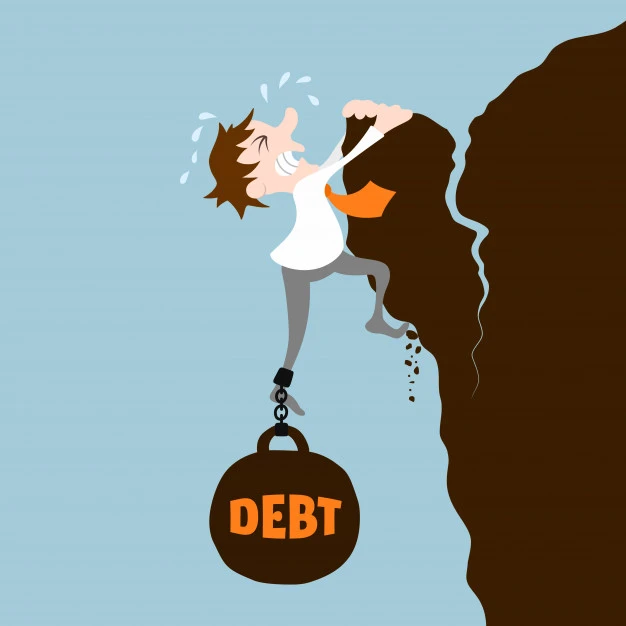
However, the absolute number of non-performing loans (NPLs) showed an increase and there was still a gloomy forecast for rise in bad debts in the next two quarters, in the wake of the current unpredictability of the Covid-19 pandemic. Saigon Investment held a talk with Dr. Nguyen Tri Hieu, a financial expert, on this issue.
JOURNALIST: - Sir, the bad debt ratio in banks has not increased much, but in absolute numbers, bad debt in some banks has increased by 10% to 30% in the first half of the year. What is your opinion on this?
Dr. NGUYEN TRI HIEU: - By the end of the second quarter, banks still kept the number of non-performing loans in total outstanding loans at a low level, but the absolute number of bad debts have increased. In quantitative terms, when outstanding loans increase from VND 100 to VND 110, bad debt increases from VND 1 to VND 5. Thus, bad debt divided by the denominator is the total outstanding debt, which produces a low ratio of bad debts, but in fact the absolute figure can increase five times.
According to Circular 01 of the State Bank of Vietnam, banks are allowed to freeze debts and not transfer debt groups. So, in the current normal debts, there may be a lot of bad debts that banks are allowed to freeze, but not able to convert. Therefore, I think that the number of bad debts in the second quarter are not really accurate.
- Sir, how would you forecast the bad debt situation this year?
- The Covid-19 pandemic appeared at the beginning of the year, but Vietnam was only affected by it in March and April, and in May we had managed to reopen. When we reopened, we were excited, but reality shows that many businesses were by then strongly impacted, not only in March and April but this has affected us until now. Especially for export companies, they have been severely affected as they have lost many orders from abroad.
Now, we are facing a high risk of a second wave of the disease. In such a situation, many businesses may again be affected, which will make us even weaker than in the first two quarters of the year. Therefore, bad debt of businesses is likely to increase very strongly this year.
However, at this time, it is not possible to make specific predictions about the bad debt situation, as there are many debts that are being restructured, frozen, and not transferred to debt groups. Therefore, even the management agencies do not know the actual number of bad debts, and only banks are aware of the real situation.
- Sir, what solution would you suggest for banks to effectively control bad debts when the banking sector is restructuring the debt term, keeping the debt group under Circular 01 of the State Bank of Vietnam, because this solution can still push risk toward banks?
- Perhaps we return to the basic problem whether banks should have a sub-book along with its existing ledger to record issues related to bad debt, so that collection departments can look at the main and sub-book to understand the bad debt status. If the bank restructures the repayment term, not transfer the debt group and push all up on the balance sheet, it will erase some information on bad debts. As such, the information shown on the balance sheet maybe very good, but in reality these are bad assets and can also create a partial status of virtual assets, leading to virtual profits.
I think banks have learnt a lot from the lessons of bad debts in the past, so they will be more cautious in lending so as not to fall into the cycle of bad debts. However, right now, banks using the State Bank of Vietnam policy to restructure the repayment term and not transfer the debt group, need to do so seriously and carefully, especially to avoid the problem of abuse of policies to hide bad debt. In my opinion, banks should have supplementary books to have accurate monitoring of bad debt status, instead of giving an optimistic picture.
- Sir, recently, banks have been liquidating assets such as real estate, machinery, production equipment, cars from popular to luxury brands. What do you think of this move?
- It is a good thing that banks are liquidating collaterals to recover debts. Instead of keeping them in debt form by keeping their collateral, banks sell the assets to recover money. If not, they will face extraordinary expenses. This will clear the bank books, when bad debts are liquidated through the recovery of collaterals. However, this move also proves that banks are very worried about the problem of bad debts.
Therefore, if any items can be liquidated, those banks will certainly liquidate, because it is expected that bad debts will increase in coming months. At the same time, in some markets such as real estate and cars, prices have become more unfavorable during the Covid-19 pandemic. Therefore, banks are trying to recover debts as soon as possible.
- Sir, when credit growth is low why do many banks still ask for credit limit?
- This is very interesting. In my opinion, there are still some banks that want a high credit growth limit because they have used up their credit and need more support from the State Bank of Vietnam. However, banks use credit extension as a propaganda tool, to prove that they still have strong growth ability.
I think that if they are not careful, these banks will push credit to high profit or high risk areas, such as in real estate and securities. Therefore, if the State Bank of Vietnam supports these banks, it is also necessary to force these banks to provide an accurate report on the use of this capital flow.
- Thank you very much.




















